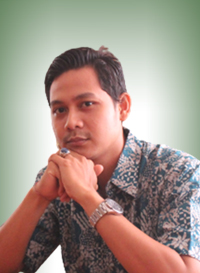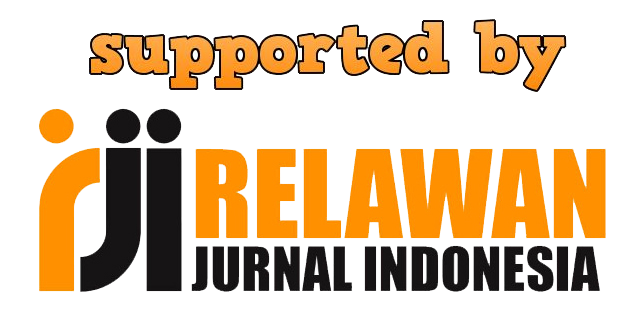Tindakan Pemerintah Daerah terhadap Rumah Apung Suku Dayak: Kajian Pustaka
Tindakan Pemerintah Daerah Terhadap Rumah Apung Suku Dayak: Kajian Pustaka
DOI:
https://doi.org/10.23887/jish.v12i3.65795Keywords:
Pemerintah, Kearifan Lokal, Kerusakan Lingkungan, Rumah ApungAbstract
Keberadaan rumah apung milik masyarakat Dayak tidak lepas dari kebiasaan masyarakat Dayak yang mendiami sepanjang aliran sungai dan menjadi kearifan lokal hingga saat ini. Namun keberadaan rumah apung ini menimbulkan beberapa permasalahan yaitu rusaknya lingkungan, menurunnya baku mutu air, bahkan pencemaran akibat aktivitas rumah tangga. Oleh karena itu perlu adanya tindakan yang dilakukan oleh pemerintah dalam mengatasi masalah ini. Penelitian ini akan menggunakan metode penelitian tinjauan pustaka (SLR). Hasil penelitian ini berdasarkan artikel dalam bentuk jurnal melalui database berupa Scopus, Science Direct dan Taylor and Francis Group yang memiliki kredibilitas internasional. Adapun hasil penelitian yakni pemerintah dapat merefleksikan semua aktivitas masyarakat lokal sebagai kearifan lokal dan harus dipertahankan eksistensinya. Kemudian dilakukannya pembuatan regulasi yang saat ini belum nampak dalam pelestarian ataupun tata cara pendirianrumah apung di Pulau Kalimantan. Kemudian hasil ketiga adalah dengan tata kelola wilayah perairan dengan ketentuan pelibatan masyarakat lokal yang bisa saja menjadi sebuah opsi dalam pelestarian rumah apung masyarakat Suku Dayak. Terakhir adalah dengan pemberian bahan baku yang murah dan berkualitas, dimana selama ini pembuatan rumah apung hanya mengandalkan pada kayu, adanya hasil penelitian terdahulu menunjukkan terdapat beberapa bahan murah dan berkualitas serta sudah tersertifikasi yang menjadikan rumah apung masyarakat Suku Dayak dapat dilestarikan dengan lebih baik.
References
Afdholy, A. R. (2017). “rumah lanting” arsitektur vernakular suku banjar yang mulai punah. Local Wisdom, 9(1), 103–117.
Ambica, A., & Venkatraman, K. (2015). Floating Architecture : A Design on Hydrophilic Floating House for Fluctuating Water Level. Indian Journal of Science and Technology, 8(32), 1–5. https://doi.org/10.17485/ijst/2015/v8i
Ansell, C., & Gash, A. (2008). Collaborative governance in theory and practice. Journal of Public Administration Research and Theory, 18(4), 543–571. https://doi.org/10.1093/jopart/mum032
Ardianti, F., Praptantya, D. B. S. E., & Hasanah. (2021). Rumah Lanting di Sungai Sambas Desa Sumber Harapan Kecamatan Sambas Kalimantan Barat ( Etnografi Budaya Sungai ) Lanting House On The Sambas River , Sumber Harapan Village , Sambas Subdistrict , West Kalimantan ( An Ethnographic of River Culture ). Jurnal Antropologi, 2(1), 31–47.
Asmorowati, S., Schubert, V., & Ningrum, A. P. (2021). Policy capacity, local autonomy, and human agency: tensions in the intergovernmental coordination in Indonesia’s social welfare response amid the COVID-19 pandemic. Journal of Asian Public Policy, 1–15. https://doi.org/10.1080/17516234.2020.1869142
Asrasal, A., Wahyudi, S. I., Adi, H. P., & Heikoop, R. (2018). Analysis of floating house platform stability using polyvinyl chloride ( PVC ) pipe material. The 4th International Conference on Rehabilitation and Maintenance in Civil Engineering (ICRMCE 2018), 95, 1–8.
Balázsi, Á., Riechers, M., Hartel, T., Leventon, J., & Fischer, J. (2019). The impacts of social-ecological system change on human-nature connectedness: A case study from Transylvania, Romania. Land Use Policy, 89(4), 1–9. https://doi.org/10.1016/j.landusepol.2019.104232
Barnes, J., Durrant, R., Kern, F., & Mackerron, G. (2018). The institutionalisation of sustainable practices in cities: How sustainability initiatives shape local selection environments. Environmental Innovation and Societal Transitions, 1–13. https://doi.org/10.1016/j.eist.2018.04.003
Birtchnell, T., Gill, N., & Sultana, R. (2018). Sleeper cells for urban green infrastructure: Harnessing latent competence in greening Dhaka’s slums. Urban Forestry & Urban Greening, 1–12. https://doi.org/10.1016/j.ufug.2018.05.014
Burke, B. F. (2014). Understanding Intergovernmental Relations, Twenty-five Years Hence. State and Local Government Review, 46(1), 63–76. https://doi.org/10.1177/0160323x13520461
Cronin, P., Ryan, F., & Coughlan, M. (2008). Undertaking a literature review: a step-by-step approach. British Journal of Nursing, 17(1), 38–43. https://doi.org/10.12968/bjon.2008.17.1.28059
Dai, L., Rijswick, H. F. M. W. van, Driessen, P. P. J., & Keessen, A. M. (2017). Governance of the Sponge City Programme in China with Wuhan as a case study. International Journal of Water Resources Development, 1–19. https://doi.org/10.1080/07900627.2017.1373637
Daud, W., Arifin, S., & D, D. (2018). Analisis Tuturan Tradisi Upacara Ladung Bio’ Suku Dayak Kenyah Lepo’ Tau Di Desa Nawang Baru Kecamatan Kayan Hulu Kabupaten Malinau: Kajian Folklor. Jurnal Ilmu Budaya, 2(2), 167–174.
Djumiarti, T. (2018). Collaborative Governance as a Management Innovation in Local Decentralization. ICENIS, 12, 10–13. https://doi.org/10.1051/e3sconf/20187309012
Dodo, Iswidayati, S., & Rohidi, T. R. (2016). Fungsi Dan Makna Bide Dalam Kehidupan Masyarakat Dayak Kanayatn Di Kabupaten Landak Kalimantan Barat. Catharsis: Journal of Arts Education, 5(2), 123–134.
Dunn, G., Brown, R. R., Bos, J. J., & Bakker, K. (2017). The role of science-policy interface in sustainable urban water transitions: Lessons from Rotterdam. Environmental Science and Policy, 73, 71–79. https://doi.org/10.1016/j.envsci.2017.04.013
Ehrnström-Fuentesa, M., & Kröger, M. (2018). Birthing extractivism: The role of the state in forestry politics and development in Uruguay. Journal of Rural Studies, 57, 197–208. https://doi.org/10.1016/j.jrurstud.2017.12.022
El-Shihy, A. A., & Ezquiaga, J. M. (2019). Architectural design concept and guidelines for floating structures for tackling sea level rise impacts on Abu-Qir. Alexandria Engineering Journal, 58, 507–518. https://doi.org/10.1016/j.aej.2019.05.003
Endangsih, T., & Ikaputra. (2020). Floating Houses Technology as Alternative Living on the Water. IOP Conference Series: Materials Science and Engineering, 797(1), 1–7. https://doi.org/10.1088/1757-899X/797/1/012020
Francesch-huidobro, M. (2015). Collaborative governance and environmental authority for adaptive flood risk: recreating sustainable coastal cities Theme 3: pathways towards urban modes that support regenerative sustainability. Journal of Cleaner Production, 1–13. https://doi.org/10.1016/j.jclepro.2015.05.045
Francesch-Huidobro, M., Dabrowski, M., Tai, Y., Chan, F., & Stead, D. (2016). Governance challenges of flood-prone delta cities: Integrating flood risk management and climate change in spatial planning. Progress in Planning, 1–27. https://doi.org/10.1016/j.progress.2015.11.001
Gutierrez, A. T., & Morgan, S. (2017). Impediments to fisheries sustainability e Coordination between public and private fisheries governance systems. Ocean & Coastal Management, 135, 79–92. https://doi.org/10.1016/j.ocecoaman.2016.10.016
Hall, T., Beecham, S., Bowes, D., Gray, D., & Counsell, S. (2012). A Systematic Literature Review on Fault Prediction Performance in Software Engineering. IEEE TRANSACTIONS ON SOFTWARE ENGINEERING, 38(6), 1276–1304.
Hamidah, N., & Garib, T. W. (2014). Studi Arsitektur Rumah Betang Kalimantan Tengah. Jurnal Arsitektur Melayu Dan Lingkungan, 1(2), 19–35.
Haque, M. M., Bremer, S., Aziz, S. Bin, & Sluijs, J. P. van der. (2017). A critical assessment of Knowledge quality for climate adaptation in Sylhet Division, Bangladesh. Climate Risk Management, 1–16. https://doi.org/10.1016/j.crm.2016.12.002
Hartoyo, A. (2012). Eksplorasi Etnomatematika Pada Budaya Masyarakat Dayak Perbatasan Indonesia-Malaysia Kabupaten Sanggau Kalbar. Jurnal Penelitian Pendidikan, 13(1), 14–23.
Hu, X., Li, H., Zhang, X., Chen, X., & Yuan, Y. (2019). Multi-dimensionality and the totality of rural spatial restructuring from the perspective of the rural space system: A case study of traditional villages in the ancient Huizhou region, China. Habitat International, 1, 1–9. https://doi.org/10.1016/j.habitatint.2019.102062
Ibitoye, A. Z., Nwoye, E. O., Aweda, A. M., Oremosu, A. A., Anunobi, C. C., Olanrewaju, N., & Akanmu. (2016). Microwave ablation of ex vivo bovine tissues using a dual slot antenna with a floating metallic sleeve. International Journal of Hyperthermia, 1–9. https://doi.org/10.1080/02656736.2016.1211323
jelajah.kompas.id. (2005). Survei Ekspedisi Lintas Barito-Muller-Mahakam: Melintas Jejak Para Penakluk Riam dan Pendaki Dinding Muller. Retrieved September 8, 2023, from Https://Jelajah.Kompas.Id/. https://jelajah.kompas.id/ekspedisi-lintas-barito-muller-mahakam/baca/survei-ekspedisi-lintas-barito-muller-mahakam-melintas-jejak-para-penakluk-riam-dan-pendaki-dinding-muller/
Kumparan.com. (2022). Budaya Rumah Apung Lanting yang Mulai Punah di Kalimantan. Kumparan.Com. Retrieved September 8, 2023, from https://kumparan.com/fajar-prasetyoo/budaya-rumah-apung-lanting-yang-mulai-punah-di-kalimantan-1xb9Hxy80wW/full
Lang, W., Chen, T., & Li, X. (2016). A new style of urbanization in China: Transformation of urban rural communities. Habitat International, 55, 1–9. https://doi.org/10.1016/j.habitatint.2015.10.009
Lewis, J. A., & Ernstson, H. (2017). Contesting the coast: Ecosystems as infrastructure in the Mississippi River Delta. Progress in Planning, 1–30. https://doi.org/10.1016/j.progress.2017.10.003
Liberati, A., Altman, D. G., Tetzlaff, J., Mulrow, C., Gøtzsche, P. C., Ioannidis, J. P. A., Clarke, M., Devereaux, P. J., Kleijnen, J., & Moher, D. (2009). The PRISMA Statement for Reporting Systematic Reviews and Meta-Analyses of Studies That Evaluate Health Care Interventions: Explanation and Elaboration. Journal of Clinical Epidemiology, 62(10), 1–34. https://doi.org/10.1016/j.jclinepi.2009.06.006
Lin, L., Han, H., Yan, W., Nakayama, S., & Shu, X. (2019). Measuring Spatial Accessibility to Pick-Up Service Considering Di ff erentiated Supply and Demand : A Case in Hangzhou, China. Sustainability, 11(3448), 1–22.
Lin, Y.-H., Lin, Y. C., & Tan, H.-S. (2018). Design and functions of floating architecture a review. Marine Georesources & Geotechnology, 1–10. https://doi.org/10.1080/1064119X.2018.1503761
Liu, L., & Xu, Z. (2018). Collaborative governance : A potential approach to preventing violent demolition in China. Cities, 1–11. https://doi.org/10.1016/j.cities.2018.02.019
Lubis, M. S., Harjoko, T. Y., & Susanto, D. (2018). The floating houses of Sintang City: space, resources and political nexus. Quality in Research: International Symposium on Materials, Metallurgy, and Chemical Engineering 24–27 July 2017, 1–8. https://doi.org/10.1088/1757-899X/316/1/012003
Lynch, K. D., Hobson, J., & Dooley, M. P. (2016). Supported housing in global austerity: Local providers fears for thefuture in Gloucestershire, England. Land Use Policy, 59, 589–601. https://doi.org/10.1016/j.landusepol.2016.09.024
Marks, D., & Lebel, L. (2015). Disaster governance and the scalar politics of incomplete decentralization: Fragmented and contested responses to the 2011 floods in Central Thailand. Habitat International, 1–10. https://doi.org/10.1016/j.habitatint.2015.08.024
Mees, H. (2016). Local governments in the driving seat? A comparative analysis of public and private responsibilities for adaptation to climate change in European and North-American cities. Journal of Environmental Policy & Planning, 1–17. https://doi.org/10.1080/1523908X.2016.1223540
Meinhold, B. (2014). Inhabitat Interview: Water Architect Koen Olthuis on How to Embrace Rising Sea Level. Inhabitat.Com. http://www.waterstudio.nl/archive/863
Mengist, W., Soromessa, T., & Legese, G. (2019). Method for conducting systematic literature review and meta-analysis for environmental science research. MethodsX, 7, 1–21. https://doi.org/10.1016/j.mex.2019.100777
Miszewska-urba, E. (2016). Modern Management Challenges Of Floating Housing Development. Real Estate Management and Valuation, 24(1), 31–40.
Mohamad, M. I., Nekooie, M. A., Ismail, Z. Bin, & Taherkhani, R. (2013). Amphibious urbanization as a sustainable flood mitigation strategy in south-east Asia. Advanced Materials Research, 622, 1696–1700. https://doi.org/10.4028/www.scientific.net/AMR.622-623.1696
Moon, C. (2015). A Study on the Floating House for New Resilient Living. Journal of the Korean Housing Association, 26(5), 97–104. https://doi.org/10.6107/JKHA.2015.26.5.097
Ng, S. (2015). Governance beyond the government: Responding to a reactionary flood governance regime in Ayutthaya, Thailand. Habitat International, 1–9. https://doi.org/10.1016/j.habitatint.2015.08.029
Novrianti. (2016). Pengaruh Aktivitas Masyarakat di pinggir Sungai (Rumah Terapung) terhadap Pencemaran Lingkungan Sungai Kahayan Kota Palangka Raya Kalimantan Tengah. Media Ilmiah Teknik Lingkungan, 1(2), 35–39.
Nugroho, A. R., Riadi, S., Normelani, E., Sari, Y. P., Geografi, P. S., Program, M., & Geografi, S. (2020). Kajian Karakter Budaya Masyarakat Kawasan Permukiman Gosong Sungai (Bars) (Studi Kasus Kampung Apung Pulau Bromo Kota Banjarmasin). Geografika, 1(1), 30–42.
Parry-wilson, H. M., Rees, S. E., Leather, H., Cole, R., Rugg, C., & Attrill, M. J. (2019). Assessing behavioural and social responses to an eco-mooring trial for Zostera marina conservation management in Torbay, Southwest England. Ocean and Coastal Management, 180, 1–15. https://doi.org/10.1016/j.ocecoaman.2019.104906
Penning-Rowsell, E. (2019). Floating architecture in the landscape: climate change adaptation ideas, opportunities and challenges. Landscape Research, 45(4), 395–411. https://doi.org/10.1080/01426397.2019.1694881
Peraturan Gubernur Kalimantan Tengah Nomor 2 tahun 2011 tentang OTK Pengelolaan Kawasan Pengambangan Ekonomi Terpadu DAS Kahayan, Kapuas dan Barito (BP KAPET DAS KAKAB).
Peraturan Presiden Nomor 3 tahun 2012 tantang rencana tata ruang Kalimantan.
Putro, J. D., & Zain, Z. (2021). Active and Passive Adaptation of Floating Houses ( Rumah Lanting ) to the Tides of the Melawi River in West Kalimantan, Indonesia. Geographica Pannonica, 25(2), 72–84. https://doi.org/10.5937/gp25-30422
Redahan, E. (2012). Floats of fancy - homes on water. Materials World Magazine. IOM3: The Global Network for Materials, Minerals & Mining Professionals. http://www.iom3.org/news/floats-fancyhomes-water
Renger, M., Kolfschoten, G. L., & Vreede, G. De. (2008). Challenges in Collaborative Modeling: A Literature Review. In B. J. Dietz J.L.G., Albani A. (Ed.), Advances in Enterprise Engineering I. CIAO! 2008, EOMAS 2008. Lecture Notes in Business Information Processing (pp. 61–77). Springer. https://doi.org/10.1007/978-3-540-68644-6_5
Ridley, D. (2012). The literature review step-by-step Guide for Student (K. Metzler (ed.); 2nd ed.). SAGE Publication Ltd.
Roy, R., Gain, A. K., Samat, N., Hurlbert, M., Tan, M. L., & Chan, N. W. (2019). Resilience of coastal agricultural systems in Bangladesh : Assessment for agroecosystem stewardship strategies. Ecological Indicators, 106, 1–10. https://doi.org/10.1016/j.ecolind.2019.105525
Sihombing, R. S. M. (2019). The Role of The Indigenous Knowledge System of The Community Dayak In Water Management Kahayan River: Review of Local Wisdom Perspective. Iapa Proceedings Conference, 341–350.
Son, H. N., Chi, D. T. L., & Kingsbury, A. (2019). Indigenous knowledge and climate change adaptation of ethnic minorities in the mountainous regions of Vietnam: A case study of the Yao people in Bac Kan Province. Agricultural Systems, 176, 1–9. https://doi.org/10.1016/j.agsy.2019.102683
Strangfeld, P., & Stopp, H. (2014). Floating houses : an adaptation strategy for flood preparedness in times of global change. Flood Recovery, Innovation and Reponse, 184, 277–286. https://doi.org/10.2495/FRIAR140231
Tan, X., Altrock, U., Schoon, S., & Zhao, J. (2018). Localized place-making and the knowledge-based regeneration strategies – The case of Xiasha Village in Shenzhen. Habitat International, 1–12. https://doi.org/10.1016/j.habitatint.2018.11.005
Taylor, B., Wylie, E., Dempster, M., & Donnelly, M. (2007). Systematically retrieving research: a case study evaluating seven databases. Research on Social Work Practice, 17(6), 697–706. https://doi.org/10.1177/1049731507304402
Thompson, M. (2018). From Co-Ops to Community Land Trusts: Tracing the Historical Evolution and Policy Mobilities of Collaborative Housing Movements. Housing, Theory and Society, 1–19. https://doi.org/10.1080/14036096.2018.1517822
Torang, R., Murtini, T. W., & Setyowati, E. (2016). Perubahan Bentuk Rumah Tinggal Vernakular Di Tepian Sungai Di Kampung Pahandut, Kota Palangka Raya. Indonesian Journal of Conservation, 5(1), 1–12.
Turrini, A., Cristofoli, D., Frosini, F., & Nasi, G. (2010). Networking Literature About Determinants Of Network Effectiveness. Public Administration, 88(2), 528–550. https://doi.org/10.1111/j.1467-9299.2009.01791.x
Undang-Undang Nomor 12 tahun 1994 tentang Pajak Bumi dan Bangunan.
Undang-Undang Nomor 28 tahun 2009 tentang Pajak Daerah dan Retribusi Daerah.
Urkude, T., Kumar, A., Upadhye, A., & Padwal, M. (2019). Review on Amphibious House. The First International Conference on Amphibious Architecture, Design and Engineering, ICAADE 2015, 1558–1562.
Usop, T. B. (2011). Kearifan Lokal Dalam Arsitektur Kalimantan Tengah Yang Berkesinambungan. Jurnal Perspektif Arsitektur, 6(1), 25–32. https://doi.org/10.13140/RG.2.2.25035.75045
Vannevel, R. (2016). Learning from the past: future water governance using historic evidence of urban pollution and sanitation. Sustainability of Water Quality and Ecology, 1–19. https://doi.org/10.1016/j.swaqe.2016.09.002
Wardani, L. K., Hasudungan, R., Sitindjak, I., Nilasari, P. F., Faustine, D., & Widjayadi. (2018). Form And Meaning Of Dayak Traditional House In East Kalimantan, Indonesia (Case Study: Lou Pepas Eheng Dayak Benuaq’s House). 3rd International Conference on Creative Media, Design and Technology (REKA 2018), 207, 265–272.
Zain, Z., & Putro, J. D. (2019). Pola Pemanfaatan Ruang Rumah Lanting Pada Pinggiran Sungai Kapuas Pendahuluan. Tesa Arsitektur, 17(1), 22–32.
Downloads
Published
Issue
Section
License
Copyright (c) 2023 Cahyoko Edi Tando, Nurul Hikmah

This work is licensed under a Creative Commons Attribution-ShareAlike 4.0 International License.
Authors who publish with the Jurnal Ilmu Sosial dan Humaniora agree to the following terms:
- Authors retain copyright and grant the journal the right of first publication with the work simultaneously licensed under a Creative Commons Attribution License (CC BY-SA 4.0) that allows others to share the work with an acknowledgment of the work's authorship and initial publication in this journal.
- Authors are able to enter into separate, additional contractual arrangements for the non-exclusive distribution of the journal's published version of the work (e.g., post it to an institutional repository or publish it in a book), with an acknowledgment of its initial publication in this journal.
- Authors are permitted and encouraged to post their work online (e.g., in institutional repositories or on their website) prior to and during the submission process, as it can lead to productive exchanges, as well as earlier and greater citation of published work. (See The Effect of Open Access)


.png)
.png)













